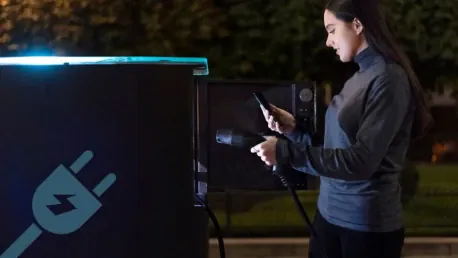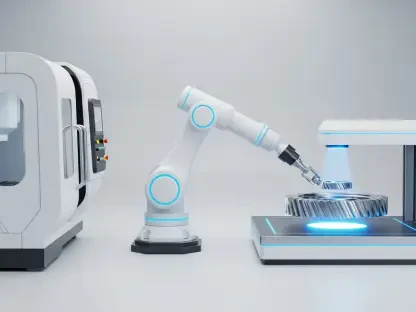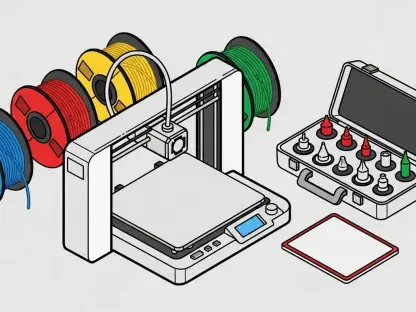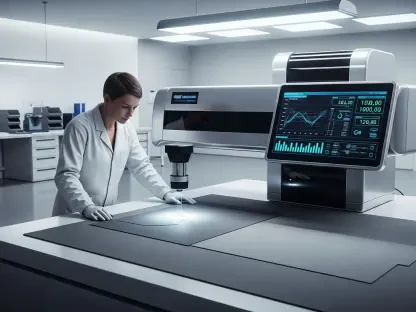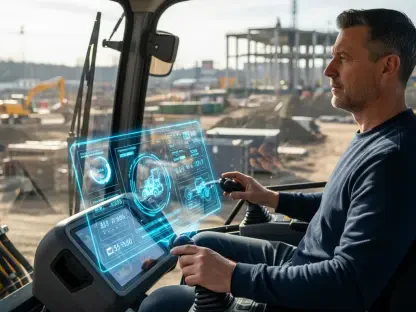The landscape of electric vehicles (EVs) in Washington state is rapidly evolving, marked by significant advancements and a growing ease of ownership. As the shift toward greener, more sustainable modes of transportation continues, Washington is emerging as a pioneering state in the electric vehicle revolution. This article explores various facets of the EV experience, from the surge in sales to the expansion of charging infrastructure, painting a picture of a state at the forefront of the electric vehicle revolution.
Surge in Electric Vehicle Sales
Record-Breaking Sales in 2024
Despite earlier reports suggesting a decline in EV sales, recent data from Kelley Blue Book (kbb.com) reveals a different story. The year 2024 saw a record-breaking sale of 1.3 million electric vehicles in the United States, with a notable 15.2% year-over-year sales spike in the fourth quarter. This surge indicates a growing interest and adoption of EVs, contradicting previous negative forecasts.
The increasing sales figures are a clear reflection of the broader trend of public adoption and interest in electric vehicles. More consumers are recognizing the numerous benefits of EVs, from environmental sustainability to significant cost savings on fuel. The shift in consumer behavior away from traditional internal combustion engine vehicles is a testament to the growing appeal, practicality, and performance of EVs in everyday life.
Public Adoption and Interest
Public interest in EVs is not just about making a purchase; it entails a commitment to a greener lifestyle and long-term savings. As awareness grows about the detrimental effects of fossil fuels on the environment, more people are considering electric vehicles as viable and sustainable alternatives. Demand for EVs has been buoyed by various incentives, including state and federal tax breaks, easing the financial investment required to transition from traditional vehicles to electric options.
Additionally, the practical benefits of EVs, such as lower maintenance costs and smoother operations, are becoming more apparent to the general public. As automakers introduce more models with diverse features designed to meet varying consumer needs, the adoption rates are set to increase further. It’s evident that the popularity of electric vehicles is not a fleeting trend but a fundamental shift towards more sustainable auto industry practices.
Evolution of Electric Vehicle Models
Early Models and Personal Experiences
The history of EVs is marked by significant milestones, such as the introduction of the Nissan Leaf in 2010. The Leaf was an early entry into the modern electric vehicle market and set the stage for future advancements. A personal anecdote illustrates how these advancements have changed the EV landscape: in 2012, the author found the Nissan Leaf unsuitable due to size constraints, given their stature at 6’4” and 280 lbs. This experience underscores the limitations faced by early EV adopters when models were limited in size and versatility.
However, the subsequent development of roomier models like the Kia Soul has addressed these issues, making EV ownership more accessible for larger individuals or those needing more space. Unlike early EV models, which required great sacrifice and compromise, modern electric vehicles now offer broader options and flexibility. Through continuous improvements in design and functionality, these vehicles have become more user-friendly and have attracted a wider audience.
Advancements in Design and Functionality
Over the years, electric vehicle models have undergone substantial improvements in design and functionality, transforming them from niche products to mainstream choices. Modern electric vehicles offer more space, better performance, and enhanced features. These advancements are not just superficial; they include technological innovations such as improved battery efficiency, longer ranges, and faster charging times, which have significantly contributed to the rising adoption of EVs.
Contemporary EVs also boast features that enhance the driving experience, such as advanced driver-assistance systems, better infotainment options, and higher safety ratings. The versatility and reliability of these newer models have dispelled much of the skepticism that initially surrounded electric vehicles. This shift towards more efficient and capable EVs reflects an industry more attuned to the needs and preferences of today’s consumers, further driving the adoption and normalization of electric vehicles.
Expansion of Charging Infrastructure
Growth in Charging Stations
A pivotal change in the EV landscape is the significant increase in charging infrastructure in Washington state. As of 2025, Washington boasts over 2,600 charging stations with approximately 7,000 charging ports. This expansion has made owning and operating an EV more convenient, reducing the anxiety associated with finding charging points and making daily travel more manageable. The availability of reliable charging options is crucial for potential EV buyers who may be hesitant due to concerns about range.
The state’s commitment to expanding this infrastructure is evident through its investment in strategically located charging stations that cater to both urban and rural drivers. These efforts are crucial in ensuring that electric vehicle drivers have access to charging facilities, regardless of where they live. The state’s push towards enhancing its EV infrastructure supports not only current EV owners but also encourages more drivers to consider making the switch to electric vehicles.
Tesla’s Contribution and Regional Improvements
Tesla’s decision to share its charging technology with other car manufacturers has further enhanced the accessibility of charging facilities. This move has created a more unified and robust charging network, benefiting all EV drivers. Tesla’s Supercharger network, known for its efficiency and speed, can now be utilized by vehicles from other manufacturers, broadening the infrastructure available to the growing electric vehicle market.
Region-specific improvements also contribute to the enhanced convenience of owning an EV in Washington. For instance, Circle K locations in Wenatchee and the Tri-Cities have added DC charging stations, a significant development for frequent travelers in those areas. Furthermore, Grant County PUD’s plans for new DC charging stations in the Grand Coulee area illustrate ongoing efforts to deepen the support network for EV drivers across the state. These regional upgrades are vital in making electric vehicle adoption a more practical choice for diverse populations, ensuring that drivers in less urbanized areas are not left behind.
Strategic Planning for EV Ownership
Addressing Range Anxiety
Owning an EV involves strategic planning, especially for long-distance travel. While range anxiety, or the fear that a vehicle has insufficient charge to reach its destination, may be a concern for some, the author argues that it is more about meticulous planning rather than undue stress. With the increasing number of charging stations across the state, daily commutes and frequent trips to nearby cities like Seattle, Yakima, the Tri-Cities, or Spokane have become hassle-free, showcasing the increasing practicality of EVs for everyday use.
This expansion helps alleviate range anxiety for drivers, as the presence of more charging stations reduces the likelihood of being stranded. As a result, EV owners are growing more confident in their vehicles’ capabilities. The approach involves integrating charging stops into travel plans, much like fuel stops for traditional vehicles, making long-distance travel more feasible and reducing the perceived risks associated with EV ownership.
Long-Distance Travel Considerations
Nevertheless, for longer journeys, such as trips to Portland, careful planning is still necessary. EV drivers must account for the availability of charging stations along their route and factor in charging times into their schedules. This aspect underscores the importance of continuing to invest in expanding charging infrastructure to support the growing EV market. Despite these considerations, the growing network of charging stations is making these trips more feasible, showing a promising future for long-distance EV travel.
Maintaining a balance between the convenience of charging infrastructure and the burgeoning demand for EVs is crucial. As the market for EVs continues to grow, so too must the availability of robust and widespread charging solutions. Washington state’s efforts to broaden charging infrastructure provide a model for other regions aiming to support EV adoption. Ongoing investment and innovation in this area will be pivotal for sustaining and accelerating the growth of electric vehicles.
The Future of Electric Vehicle Adoption
Positive Trends and Outlook
The overarching trend in Washington state is clear: EV ownership is becoming more user-friendly and practical. The increasing number of charging stations, growing EV sales, and the proliferation of technology sharing among manufacturers are driving this transformative trend. These developments suggest a positive shift towards a sustainable automotive future, with electric vehicles poised to become a common sight on Washington’s roads. The state’s forward-thinking approach could set the standard for other regions aiming to promote EV adoption effectively.
Washington’s proactive measures in promoting EV adoption demonstrate a commitment to environmental sustainability and economic growth. The state’s investment in infrastructure, coupled with incentives for EV buyers, is creating a supportive environment for the transition to electric vehicles. These policies and initiatives ensure that Washington remains at the forefront of the electric vehicle movement, paving the way for a cleaner, greener automotive future.
Broader Implications for the EV Market
The electric vehicle (EV) scene in Washington state is undergoing a dynamic transformation characterized by notable advancements and increasing ownership convenience. As the movement towards cleaner, more sustainable transportation gains momentum, Washington is positioning itself as a trailblazer in the EV revolution. This article delves into the many aspects of the EV experience in the state, highlighting the impressive rise in EV sales and the extensive development of charging infrastructure. Washington’s commitment to fostering an environment conducive to electric vehicle use has set it apart as a leader. The state’s proactive stance includes not only facilitating easier access to EVs for its residents but also ensuring that the necessary infrastructure keeps pace with the growing demand. By focusing on enhancing the user experience and expanding support networks, Washington is creating a blueprint for other states to follow in the transition to greener transportation. Ultimately, this underscores Washington’s pivotal role in driving the electric vehicle movement forward and its dedication to a sustainable future.
